It’s a humbling moment when you realize that not everyone has a use for the product you poured your heart and soul into.

That’s right: Not everyone wants an app to remind them of their daily tasks or a food courier that delivers hot meals at a moment’s notice. It’s impossible to make everyone happy all of the time—and that’s OK!
What’s not OK is wasting your resources (like ad money) on an audience that’s not searching for your product. What if there was a way to focus your ad campaign only on interested people?
That’s where negative keywords come in. They help ensure your ads are not seen by irrelevant traffic.
What Are Negative Keywords?
A negative keyword is a word or phrase you’d like to exclude from your campaign. Negative keywords let you efficiently weed out audience members who are not interested in what you have to offer so you can focus on hitting the right leads. When used correctly, they can make online advertising more efficient and profitable.
If you want your “car insurance” ads to appear when that phrase is mentioned in a Google search but not if an individual is looking for “cheap car insurance,” a negative keyword would ensure your ads don’t show up for the latter.
The more specific you can be with your negative keywords, the better. Being specific prevents wasting money on people who will never buy your product or service—no matter how often they see your ads.
Different types of negative keywords: broad, phrase, and exact
There are three types of negative keywords you can use in your Google Ads campaigns: broad, phrase, and exact matches. Let’s use the negative keyword “board games” as an example.
Negative broad match: Your ad will be excluded if the search contains all the negative keywords, even if the words are in a different order. Your ad might still come up if only some terms are included in the search. Broad match is the default setting for all Google Ads accounts.
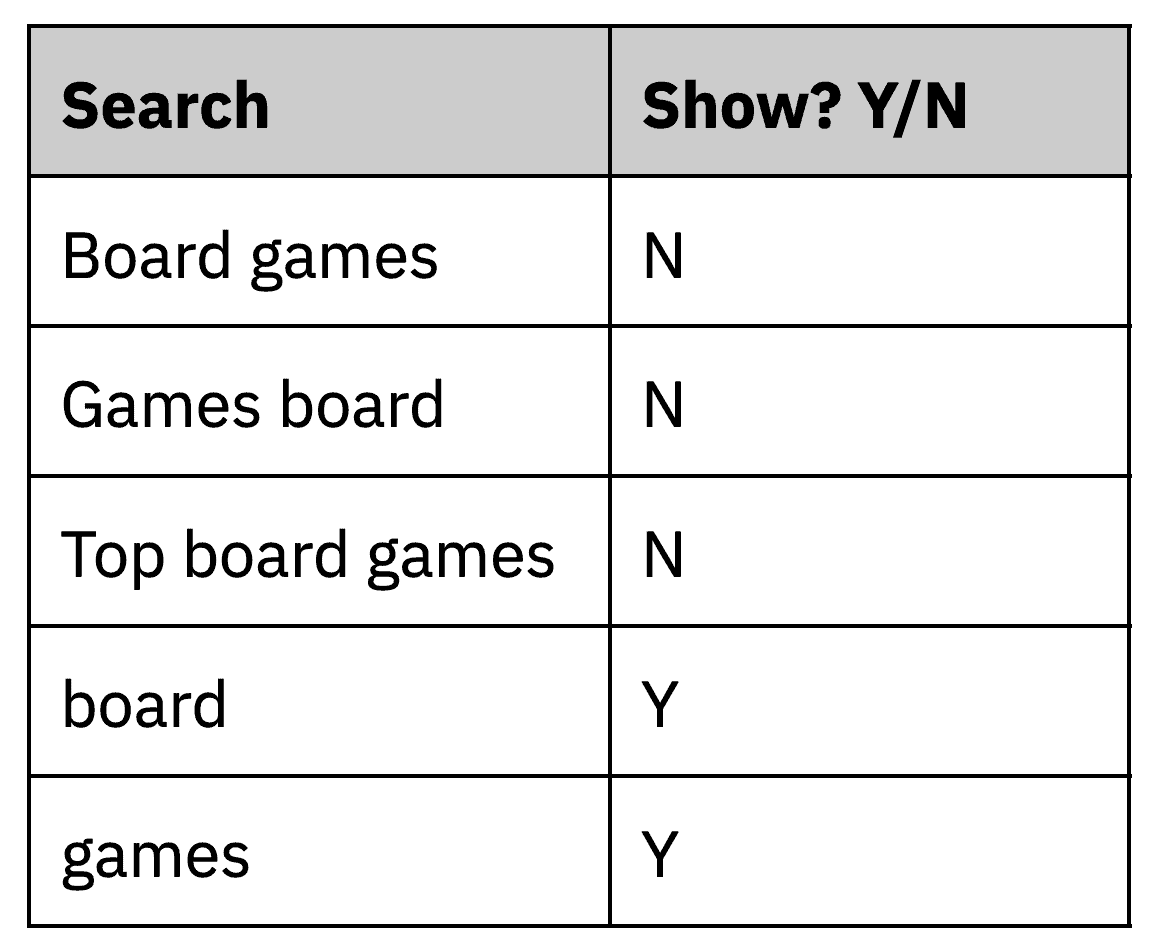
Negative phrase match: Your ad will not show if the search contains all the negative keywords if they are in the same order. The search can include additional terms, but the negative keyword must appear in the same order to be excluded from the search results.
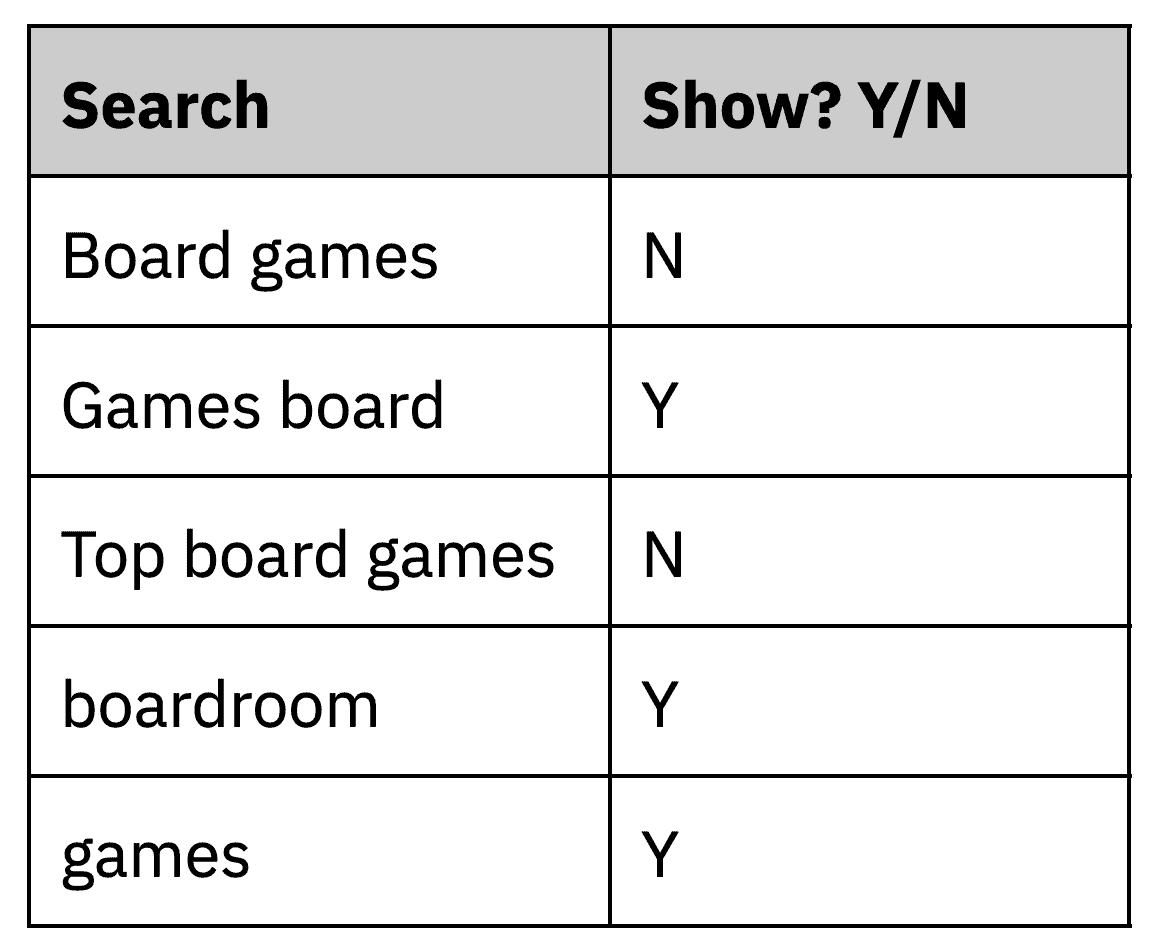
Negative exact match: Your ad will not show only if the search contains the exact negative keyword. There cannot be any additional words in the search.
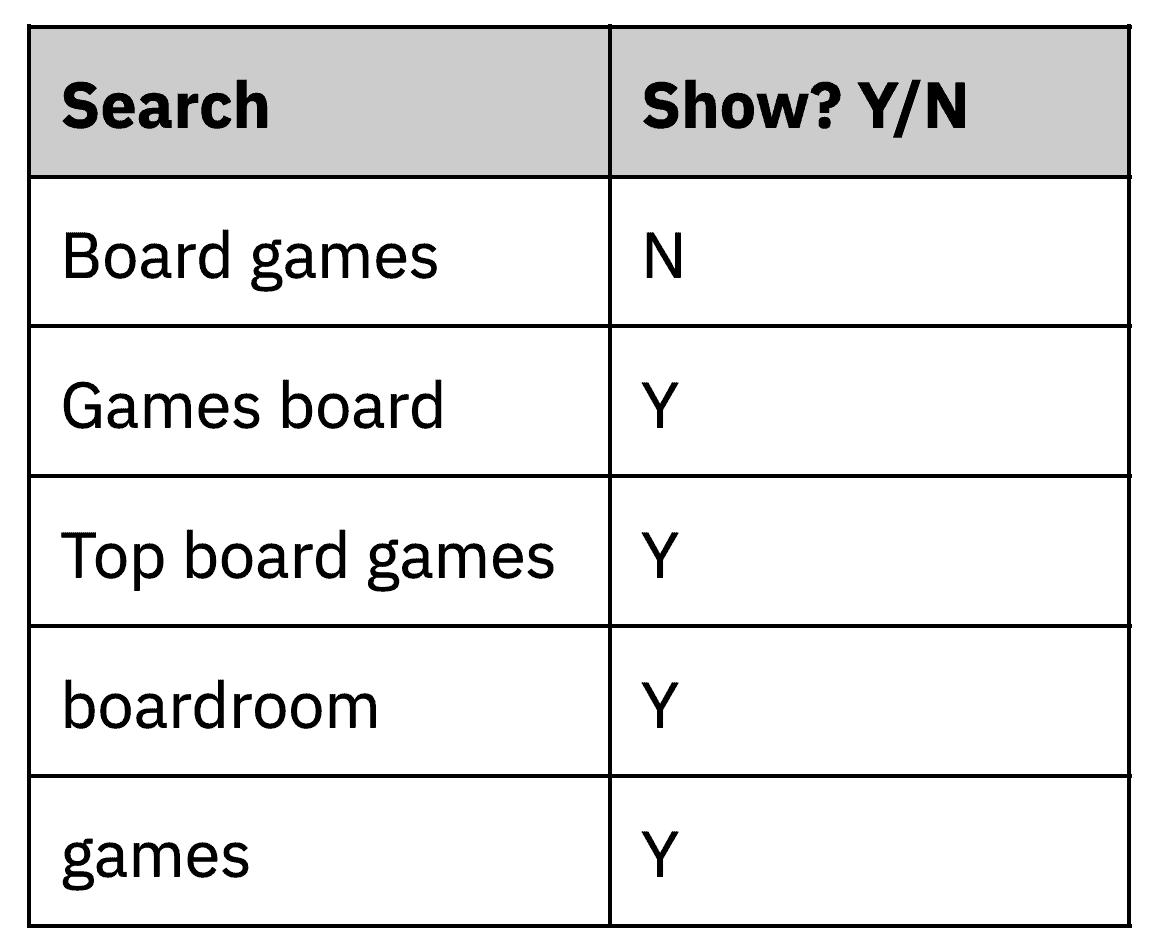
It may seem counter-intuitive to want to cut off large groups of people from your campaign, but adding negative keywords can help you immensely to improve your return on investment (ROI). You’ll find that there are a lot of customer behaviors and habits on the web you can use to hone your keyword list. Here are some examples of how adding negative keywords will help improve your campaigns:
- Improve the quality of prospects: Negative keywords will not only reduce the number of unqualified leads in your campaigns, they will also help improve the quality of those that show up.
- Improve CTR: When the audience is more likely to be interested in your product, you have a much better chance of getting more impressions and increasing your CTR.
- Save money: Including undesirable keywords in your campaign will cost you money that you don’t need to spend. Negative keywords help keep this cost down, and they also help your ROI.
How to Find Negative Keywords
Google’s many tools help you find potential negative keywords by looking at some of the data that can be mined from your accounts.
Google Keyword Planner
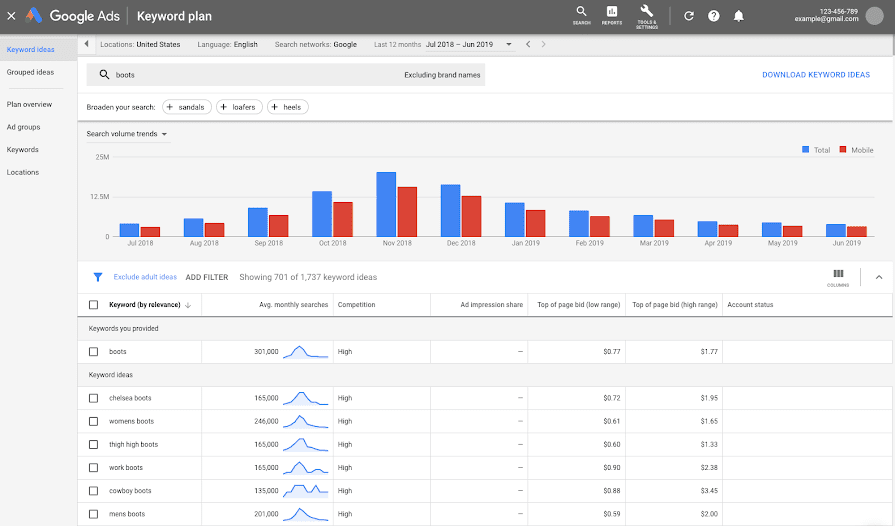
The main purpose of the keyword planner is to discover keywords to bid on, but it can also be extremely helpful when you’re trying to find negative keywords. For example, if you type in “boots,” it will show you the aggregate number of monthly searches for that phrase and related phrases like “cowboy boots.” If you exclusively sell rain boots, you probably don’t want to target an audience searching for “cowboy boots.”
Google Search Terms Report
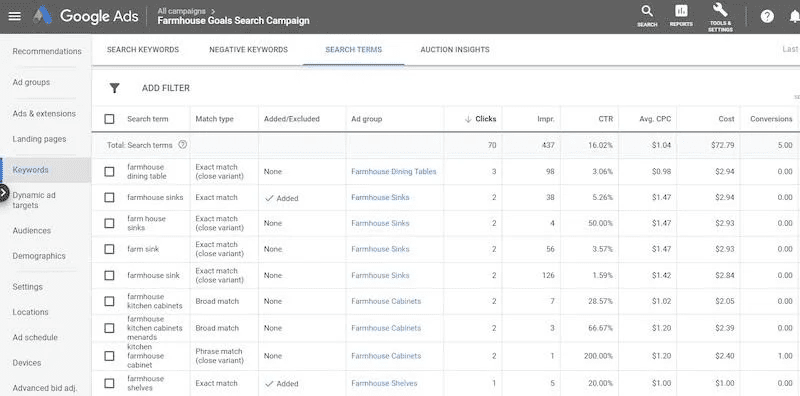
The Google Search Terms Report shows you the number of impressions, clicks, CTR, and average cost-per-click (CPC) for specific search queries. We can see exactly what search terms are causing your ads to show up. The report gives you insight into the mindset people were in that led them to your ads. By seeing the search queries people used, you can fine-tune which keywords you want to emphasize and which keywords you need to exclude.
Google Search
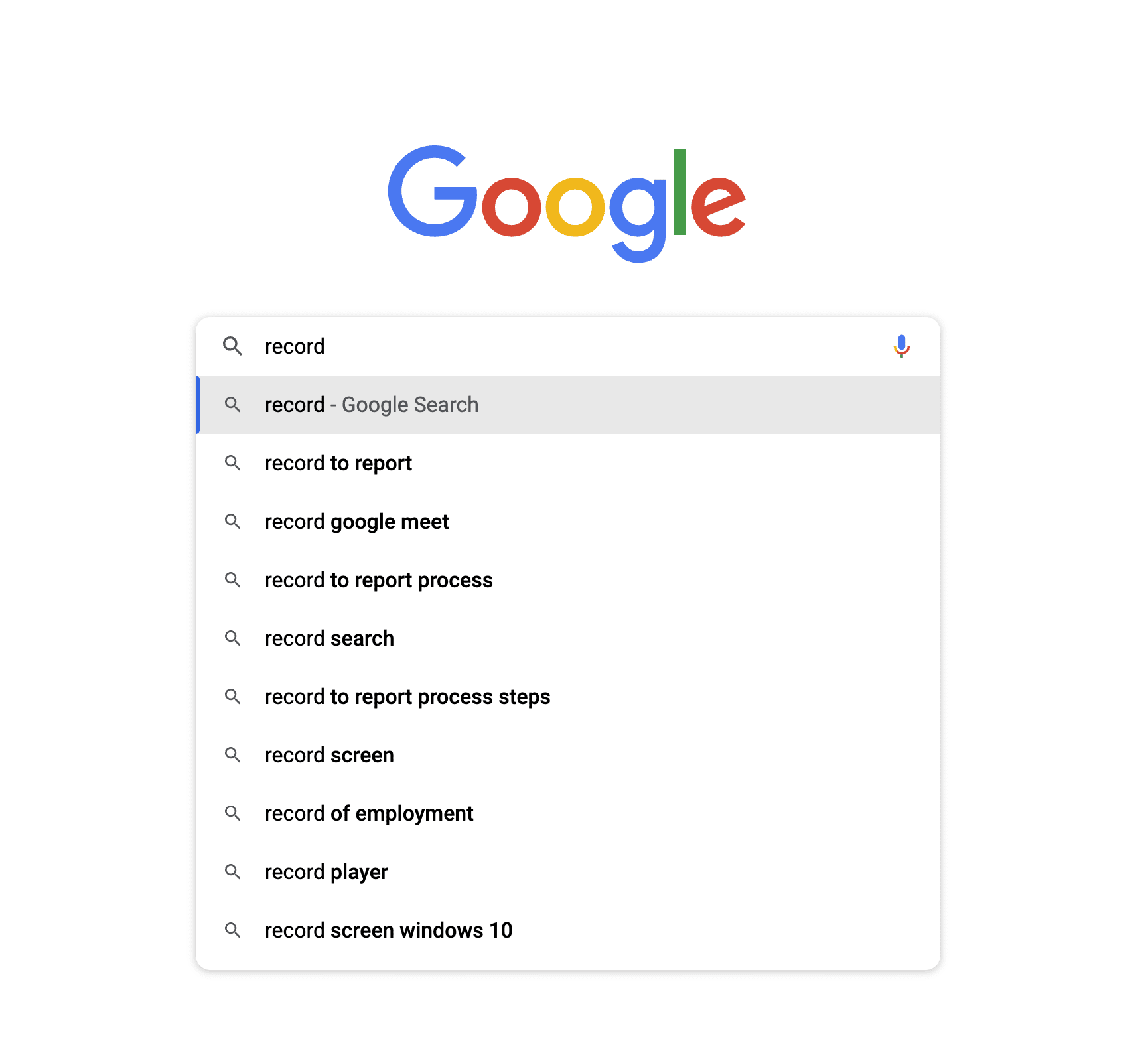
A simple Google search can be all you need to discover some negative keyword opportunities. When searching keywords you’re hoping to target, keep an eye out for what other results pop up that you’ll want to exclude later. For instance, if you’re running a record store, you might add irrelevant search terms that come up as suggestions.
Focus on the Positive by Weeding Out the Negative
Negative keywords are an important part of any PPC campaign because they help to optimize your results, save you money, and reduce the number of unqualified leads, which will ultimately improve your ROI.
By including negative keywords in your campaign, you can narrow the pool of available searches and improve the quality of prospects and leads. The more specific you are with your negative keywords, the less money you’ll waste on people who won’t buy from you.
Finding your negative keyword terms is only a small part of the battle. If you want to target the right audience with the right message, you also need to optimize your landing page for PPC and craft the perfect ad. Incorporate these tools into your online advertising process, and you’ll see a serious improvement in your results.

![[General] CI Conversion Intelligence Platform](https://unbounce.com/photos/blog-visual-cta-bofu-2260x1217-1.png)
